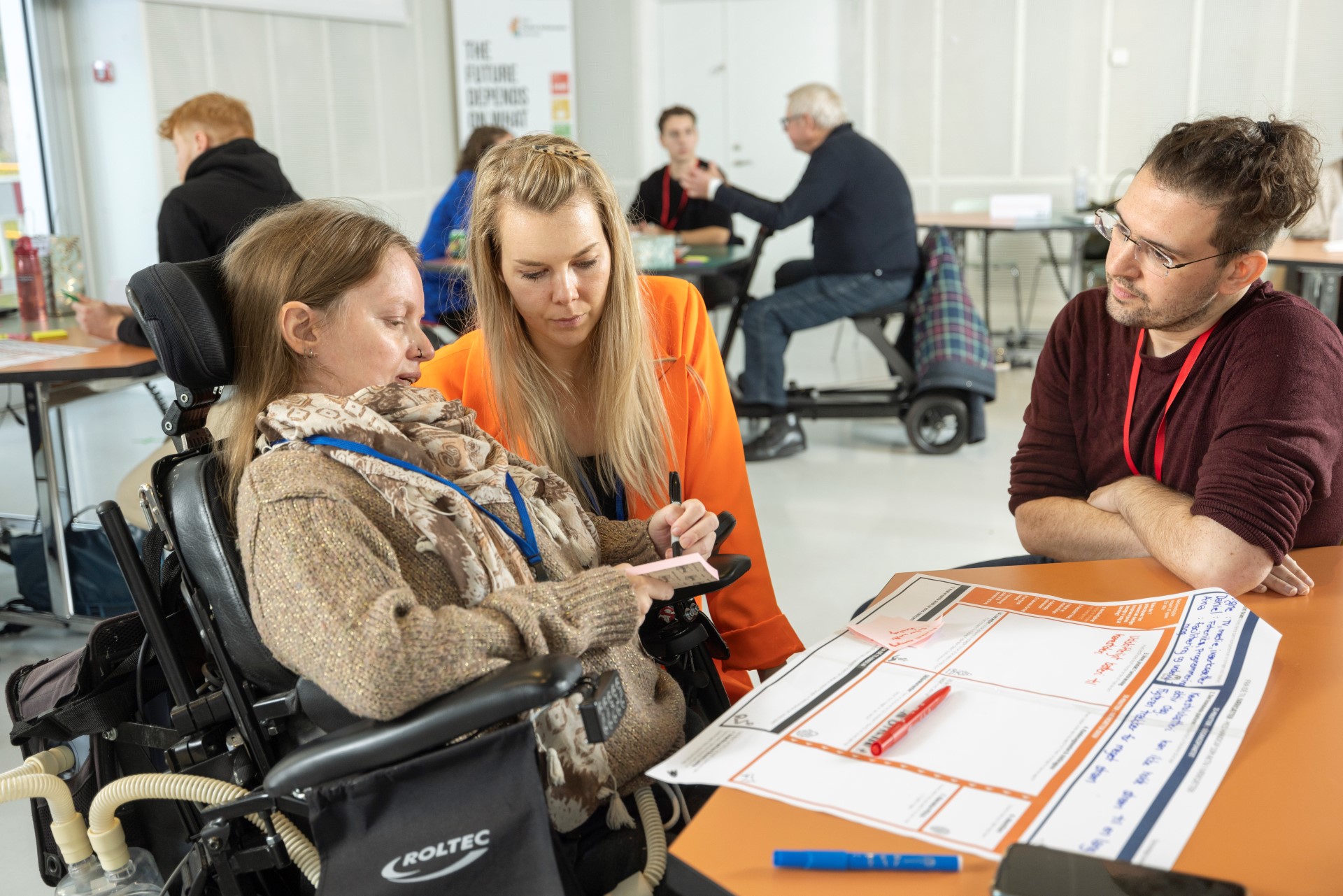Last year the first edition of the Universal Design Playbook launched. The online open-source playbook provides thoroughly tested methods and specific tools in an interactive website to help organize and prepare for inclusive design processes and workshops, with an additional layer of inclusivity tips and reminders. The playbook was initially intended for engineering students at the Technical University of Denmark (DTU), but since its creation the playbook has reached 114 countries, been used by international universities, as well as being promoted by UX-superstars such as the founder of SmashingMag, Vitaly Friedman.
Bridging the gap in design processes
An estimated 1.3 billion people in the world are, according to WHO, living with significant disabilities. Given the staggering statistic, people with disabilities are often referred to as the world’s largest minority, a minority that consists of both visible and invisible disabilities, and a minority that’s at risk of being excluded when we develop and design new products.
“Non-inclusive designs can be experienced by many people out there. There are many different solutions that leave, for instance, wheelchair users, people with dyslexia, autism, or ADHD behind. The reason behind this is that it’s natural for humans to “only” consider what we are familiar with. We design for ourselves basically,” says Assistant Professor at DTU Skylab, Dagný Valgeirsdóttir.
She continues that there’s a need to bridge the gap in conventional design practices and that the change that the Universal Design Playbook provides isn’t centered primarily on people with disabilities. It is centered on creating a methodology based on research that ensures equal access to a given design in order to ensure that inclusion of all people isn’t an afterthought but a fundamental aspect of how we design. Beyond tools and methods, the ambition is that the Universal Design Playbook can inspire designers and other developers to have an inclusive mindset when creating new solutions.
The importance of universal design in real-life
The global recognition is a validation of the importance of changing mindsets in design processes, no matter if it is a new website, a new building, or how people are commuting by public transport.
Sif Holst, Vice Chair at the Disabled Peoples Organisation in Denmark, welcomes the increased attention on universal design and underlines the importance of including the inclusive design method in future solutions:
“Universal Design is important and easy to achieve early on in the process. It all comes down to simple yet powerful design choices. For instance, we can design our buildings so that we can ensure that as much sunlight is available for people who rely on lip-reading to communicate. If more parts of our society are designed in a smart and accessible way from the beginning, we’ll enable more disabled people to live active and independent lives. Having the playbook earning international recognition is of high value to not just people living with disabilities, but all people in general,” the Vice Chair says.
She highlights that everybody wins when the principles of Universal Design are used and shares how the House of Disability Organisations has been designed using the same principles as the playbook promotes.








